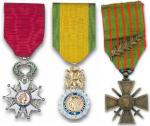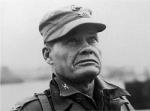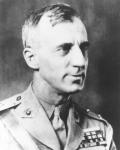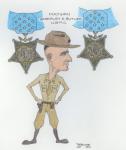-
Posts
564 -
Joined
-
Last visited
Content Type
Profiles
Forums
Blogs
Gallery
Events
Store
Everything posted by Harvey
-

Paraguay Order of Merit
Harvey replied to kapten_windu's topic in Rest of the World: Militaria & History
Aside from the lettering, what I'm wondering about is why the lion's heads are so different - in Windu's it's roaring, but in the others the mouth is closed. What's up with that? -
This is the only one I have, but I think it's pretty hard to come by. It's a shoulder patch for the Republic of Georgia's Ministry of Internal Affairs - the lettering at the top translates as "District Inspector."
-
Unfortunately TacHel, it appears that that's exactly what it was for. I mean, it *was* awarded in Cannes, after all...
-
Military-issue Ka-Bars (such as those for Marines) have "USMC" (or USN) stamped on one side of the blade nearest the hilt - the opposite side is stamped "KA-BAR." As it was a commercial company (Union Cutlery Company), they of course continued to produce knives for the civilian populace, even during wartime. If yours doesn't have anything other than "KA-BAR" stamped on it, it's likely a commercial production run of the well-known fighting knife.
-
Here's the story of the Ka-Bar from the company's website: On December 9, 1942, after the start of World War II, KA-BAR submitted a fighting knife to the United States Marine Corps in hopes that it would become general issue to that branch of the military. Working in conjunction with the Marine Quartermaster Department a design was devised and soon production was under way on a new and improved fighting / utility knife for the Marines. As the war escalated, the demand for these knives was so great that the KA-BAR factory alone could not keep up. The government assigned several knife companies to create similar knives as supplemental pieces for those serving the War. KA-BAR's wartime production totaled more than 1 million. The KA-BAR knives became so well recognized for their quality and so abundant in number that "Kabar" became the name by which many referred to this knife pattern, regardless of whether the knife was manufactured at the KA-BAR facility. These knives were depended upon to perform daily tasks such as pounding tent stakes, driving nails, opening ration cans and digging foxholes, not to mention defending lives. Growing so in popularity and earning only the greatest respect, the KA-BAR was adopted by not only the Marines, but also the Army, Navy, Coast Guard and Underwater Demolition Teams. Years after World War II, many KA-BARS were unofficially reactivated in the Korean, Vietnam, Desert Storm and Iraqi Freedom conflicts. The dependability and consistent quality of wartime KA-BARs was the result of constant strict quality control procedures by KA-BAR workers and supervisors as well as the US Marine Corps and Navy Supply inspectors who were assigned to the KA-BAR factory to work along with company personnel to accomplish this goal. These high quality standards were maintained in 1976 when production was reintroduced to commemorate the Marine Corps 200th Anniversary of service to the United States. It was then that the original factory in Olean, New York, along with some of its original craftsmen, undertook the job of creating a "full dress model" of the original – a Limited Edition Commemorative that would prove to be most meaningful to the Marines. Using the original blueprints which had been stored in the company archive files, the recreated knife was a true work of art that retained the look, feel and performance of the original battle ready combat knife. The first one of its kind, serialized with the number "1", was presented to the Commandant of the Corps and was later put on display at the USMC Museum at Quantico. The USMC Commemorative was so enthusiastically received that it became obvious that the original KA-BAR Fighting / Utility knife had retained its popularity through the years. The limited production Commemorative was so quickly taken up by the Marines, knife enthusiasts and collectors that KA-BAR decided to return it to regular production in its standard form. With only a few changes made possible by modern technology, the KA-BAR Fighting / Utility Knife was reintroduced. Today, the original USMC Fighting / Utility Knife remains the first choice for many Marines who choose to carry it as their personal option knife during service. It is also a favorite of adventurers, survivalists, outdoor sportsmen and, of course, knife collectors who know that this knife – this "American Legend" – deserves a place in their collection.
-
It seems that unless a foreign decoration is awarded on the battlefield soon after the action occurred, there is most likely some type of political angle at work. I know a Marine pilot who received a British DFC, and one of our own on this forum was awarded a French decoration for his close support of the Legion, I believe. As for Bronze Stars, the requirement for those has also changed over the years. For example, a WWII vet needs only to show that he was awarded a Combat Infantry Badge (CIB) in order to also be awarded a Bronze Star - so any infantryman who saw any type of action would thereby qualify. Nowadays it's a bit more stringent. Strictly militarily speaking, it may or may not be appropriate to award the Legion d'Honneur to WWII vets at this late date, but I can't say that I begrudge them the honor, even if it is politically motivated. Anything that keeps their sacrifices in the (unfortunately short-termed) memory of our national conscience is probably a good thing. Heroes never go out of fashion.
-
I don't think you can make the comparison between the LdH and the MOH/VC, because those awards are given ONLY for conspicuous gallantry in the face of the enemy - NEVER to civilians. I think we probably agree in principal on this issue - that awards should be given for the deeds performed, hopefully as soon after the event as possible. However, I also understand the desire to honor those veterans in their waning years and acknowledge their sacrifice, which is probably why such a big deal was made over the last WWI veteran here in the U.S., even though he hadn't done anything that remarkable during the Great War - but he was the only surviving representative of all those who had. Frankly, I would rather see the French gov't award a Croix de Guerre or Medaille Militaire than the LdH to the veterans, as they are specifically military awards. And thanks for your service as well, mate. :beer:
-
I don't know if it applies to all vets, or if it's simply directed at the U.S. Maybe one of the Brits on here can inform us if the same thing is happening on their side of the pond. I disagree that it's a cheapening of the award - according to the reports I've read, they select 100 WWII vets per year, based on service records, awards, wounds received, etc. I agree with Prosper - handing awards like this out to entertainers, politicians, celebrities, etc. is the real cheapening of the award. Recognizing and honoring a veteran for his services 60+ years later as a means of demonstrating that they (the French) have not forgotten the sacrifices that were made in order to liberate their country seems entirely appropriate. Hardly a cheapening of the award, IMHO.
-
Yeah, I read about it awhile back. WWII vets who can prove that they fought on French soil are eligible to apply; awards for valor and/or receipt of a Purple Heart apparently help your case. Here's a link to one story: http://www.sacbee.com/2011/03/04/3450035/sacramento-wwii-vet-receives-frances.html "Under a program initiated by former French President Jacques Chirac in 2005 and continued by current President Nicolas Sarkozy, France is honoring U.S. veterans with its highest military award - created by Napoleon in 1802 - to thank them for their service in World War II." A few more links from the San Francisco French Consulate website: http://www.consulfrance-sanfrancisco.org/spip.php?article1447 http://www.consulfrance-sanfrancisco.org/spip.php?article1290
-
In the meantime, I'm trying to help my friend get his father recognized with the LdH for his service to France during WWII - service for which he was awarded both a Bronze Star and a Purple Heart.
-
As a military officer and an artist, I appreciate you posting these on here. I've done a number of different caricatures for my friends over the years, and can just imagine this officer doing sketches of all his mates to pass the time. Here's a few of mine: This one is of Major General Smedley Butler, USMC. Awarded the Medal of Honor on two separate occasions for acts of valor in Vera Cruz, Mexico and Haiti.
-
-

HM Colin VI Firth
Harvey replied to Lukasz Gaszewski's topic in Great Britain: Orders, Gallantry, Campaign Medals
Why would he be awarded the U.S. European-African-Middle Eastern Campaign Medal? Especially since he already had the France & Germany Star awarded by his own country. -

HM Colin VI Firth
Harvey replied to Lukasz Gaszewski's topic in Great Britain: Orders, Gallantry, Campaign Medals
James- Thanks for pointing that out; I should've realized that the sovereign's orders would be different than any others, and would therefore use different postnominal letters. I should've recognized the Grand Cross of the Legion d'Honneur, but my mind was diligently searching for *British* awards, so we gots a little confused... Also, I believe that it must be the Edward V Jubilee Medal that appears (on the real uniform )where the Savoy medal was (on Colin Firth's uniform) - another error on the part of the film makers. But why would he wear the Sovereign's Badge of the Order of the Bath AND the Grand Cross of the Order of the Bath at the same time? And why is he not wearing the Grand Cross of the Order of St. Michael & St. George (or the Grand Cross of the Order of the Star of India, for that matter)? Probably he just ran out of room, and couldn't pin more than 3 on at a time - esp. with that sash. -

HM Colin VI Firth
Harvey replied to Lukasz Gaszewski's topic in Great Britain: Orders, Gallantry, Campaign Medals
So around his neck he has the KCB & KCVO, on his chest he's wearing the Order of the Garter (right) and the GCB (bottom) - but what's the one on the left? And where's the GCMG? And what's the medal (w/red ribbon) in the 7th position, where the Italian Military Order of Savoy would've gone? -

Artillery piece for identification please
Harvey replied to coldstream's topic in Armour, Vehicles, Ships & Aircraft
Who says it's going to the side? If you look closely, it appears that the chain is running straight out & down from the barrel, which gives the appearance of it running sideways. Given the height of the barrel above the ground, I don't think it's unreasonable for the chain to be angling downwards, esp. if the other end is being pulled (at waist height) by a group of men, or connected to something else. I agree that maintenance on the gun is a better theory than cleaning the bore, yet it doesn't explain why the chain would be run down the barrel. If I were going to pull it out of battery, I would wrap the chain around the end of the barrel, not feed it all the way down to the breech. -

Artillery piece for identification please
Harvey replied to coldstream's topic in Armour, Vehicles, Ships & Aircraft
As a former USMC artillery officer, I have to agree with you. I hadn't considered rope vs. chain, which would make much more sense if that method were used. On our own 155mm howitzers, we still use the rod & bore brush, shoved down from the barrel. Which makes it even more of a puzzler, as I can't for the life of me think why they would run a chain down the barrel, if it's not to either clean it or move it. -

Artillery piece for identification please
Harvey replied to coldstream's topic in Armour, Vehicles, Ships & Aircraft
Re. the chain - it could be used to to attach a bore brush to, then run down the length of the barrel and pulled back out. Given the length of the barrel, it might've been difficult to push a rod with brush attached all the way down. This way, the chain could be fed down the barrel, the brush attached at the breech, then pulled back out the barrel. Just a thought. -

HM Colin VI Firth
Harvey replied to Lukasz Gaszewski's topic in Great Britain: Orders, Gallantry, Campaign Medals
The only two I see right off the bat are that he's missing the Mention In Dispatches palm on his WWI Victory Medal and the palm on his Croix de Guerre. And wouldn't the rosettes on his Italian & Russian medals be bigger? -

HM Colin VI Firth
Harvey replied to Lukasz Gaszewski's topic in Great Britain: Orders, Gallantry, Campaign Medals
Ok, I'll give it a shot: Order of the Bath - Knight Grand Cross (GCB)Order of the Star of India - Knight Grand Commander (GCSI)Order of St. Michael and St. George - Knight Grand Cross (GCMG)Royal Victorian Order - Knight Grand Cross (GCVO)Order of British Empire - Knight Grand Cross (GBE) (military)1914-1915 StarBritish War MedalWWI Victory Medal, w/MIDQueen Victoria Jubilee Medal, 1897Edward VII Coronation Medal, 1902George V Coronation Medal, 1911George V Silver Jubilee Medal, 1935Italian Military Order of Savoy??Russian Order of St. Vladimir??French Croix de Guerre 1914 w/palmThe only ones that don't seem to make sense are the Queen Victoria Jubilee & George V Coronation medals, since George VI was born in 1895!










